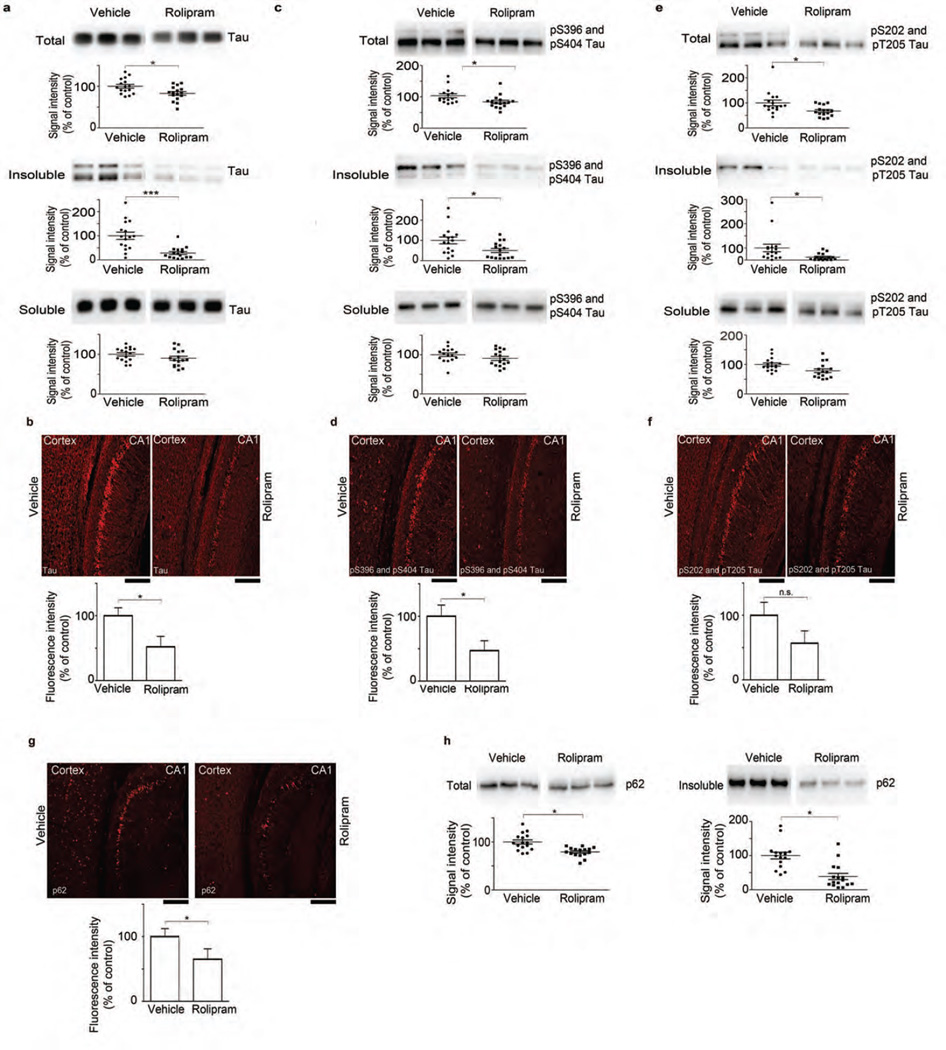Figure 4.
Rolipram administration reduces accumulation of tau species and p62 in vivo. (a,c,e) Immunoblot analysis and corresponding densitometric quantification of total, insoluble and soluble extracts of tau (a) and pS396 and pS404 (c) and pS202 and pT205 (e) tau epitopes from cortical tissue of rTg4510 mice treated with vehicle or rolipram (b,d,f,g). Immunofluorescence labeling and quantification of fluorescence intensity for tau (b), pS396 and pS404 (d) and pS202 and pT205 (f) tau epitopes, and p62 (g) in the CA1 region of the hippocampus of rTg4510:Ub-G76V-GFP mice treated with vehicle or rolipram. Scale bars, 200 µm. (h) Immunoblot analysis and densitometric quantification of p62 in total and insoluble extracts from cortical tissue. Scatter plots represent quantification of immunoreactivity normalized to GAPDH. Statistical analyses of rolipram (n = 16) and vehicle-treated (n = 16) mice for a,c and e were performed in two sets. For quantification of immunofluorescence signal (b,d,f,g), slices from 6 mice per treatment group were analyzed. Error bars, mean ± s.e.m.; n.s., not significant; *P < 0.05, ***P < 0.001 (unpaired two-tailed Student’s t-test). Vehicle treatment served as control for all experiments.

